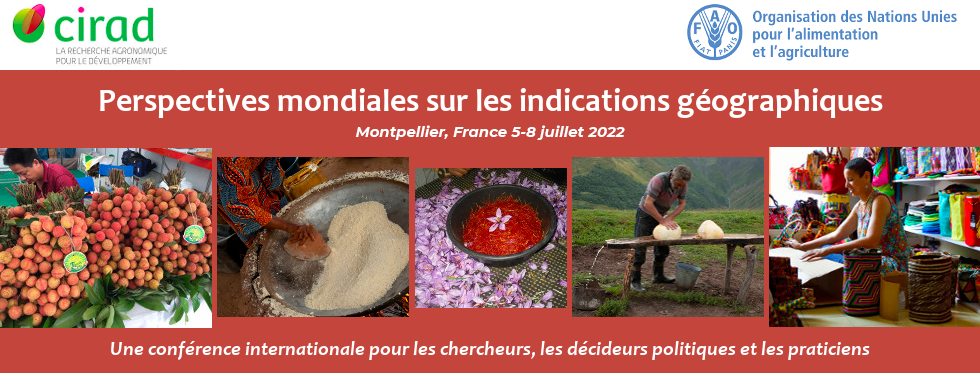The reference to the geographical names and locations has always been since immemorial ancient time part of human heritage and a support for the development of impersonal trade. More recently, in the second part of the XXth century, the protection of Geographical Indications as formal Intellectual Property Rights have been subject to a number of sharp economic and political debates and negotiations at the international level, especially between the US and the EU (Chen, 1997, Lorvellec, 1997, Josling, 2006, Barham and Sylvander, 2009, 2011, Babcock, 2015). During the last decades, the rapid adoption of dedicated institutions and legislations on Geographical Indications by a growing number of Southern countries open new perspectives for their legal recognition at the international level (Vandecandelaere et al. 2009, Marie-Vivien 2012, 2015).
In this communication, we extend current researches, using the pioneering work of Hess & Ostrom (2003, 2007), to understand the institutional and political dynamics at stake at the international level that are currently involved for their entitlement as a Global Knowledge Commons. As suggested by Hess and Ostrom (2006), knowledge, in its intangible form, fell into the category of a “public good” since it is difficult to exclude people from knowledge once someone had made a discovery. However, the “public good” dimension is also not synonymous with open and free access. With the globalization of trade, the increasing “enclosure” of the global information commons has been also observed and subject to severe critics. A dilemma, a number of legal scholars suggested the need for a positive definition of the concept of “public domain” as it depends of the nature of IPR regimes and subject to the territoriality of legal rules (Dussolier, 2015). Our analysis elaborates on this last line of argument with a specific reference to IPR regimes on geographical indications.
Our analysis is based on an extensive survey of past and current academic literature on Geographical Indications, and a detailed analysis of current negotiations surrounding GI's in the international trade agreements. These debates involved leading international organizations, such as the WTO, WIPO, FAO acting as a form of international polycentric governance, rather than a unified one, and as key institutional drivers of the diffusion of geographical indications worldwide. After giving an overview of the different lines of theoretical arguments and discursive strategies developed for the definition of IPR regimes on geographical indications, we investigate more precisely an alternative approach where geographical indications are defined as “knowledge commons” (Hess and Ostrom, 2003, 2007). Our analysis includes a discussion about the relationships and tensions between human traditional knowledge and the non-human biophysical environment (Downes, 2000), and the question of the competing registration systems and the rules of enforcement (O'Connor, 2004, Arrunada, 2012). Our findings provide some evidence about a possible shift in interpretation and open new spaces for the GI's recognition as Global Knowledge Commons, but also highlight the current economic and social dilemma surrounding their protection under dedicated IPR regime.



